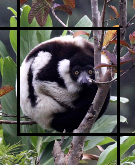The Lesser Rhea, South America's "Ostrich", is a fairly common bird in the Mato Grosso state in the region of the Pantanal
Nothing beats the Pantanal for easy-to-see wildlife! Definitely one of the best wildlife destinations I have ever visited, the Pantanal is a fascinating region that I explored for two weeks in the mid 1990's.
During this trip, I spent time at various pousadas designing an expedition that I was hoping to market through La Selva Expeditions. Although I was only able to send two clients to the Pantanal, the two weeks I spent there were sublime.
Click the links below to see more images from the Galapagos and South & Central America
Animals of South & Central America
Birds of South & Central America
South & Central American People & Places
Here is the program I put together and participated in while I was in the region:
THE GREAT PANTANAL
DAYS 1-3: ARARAS LODGE (3 Nights): Upon arrival, the group is transferred to the Araras Lodge, located near the famous Transpantaneira highway, where it will be possible to see the great variety of animal life of the region. Such fascinating animals as the spectacled caiman, river otters, giant anteaters, anacondas, black and green iguanas, capybaras, swamp deer, coatis and howler monkeys can often be seen form the edge of the road! Birds are incredibly prolific as well. It is possible to see the hyacinth and blue and yellow macaws, as well as wood storks, roseate spoonbills, and dozens of species of raptors. Parrots and parakeets are equally numerous. There will be hundreds of species to observe! The Araras lodge is situated deep in the heart of the world famous Pantanal. This comfortable Pousada (Brazilian ranch) is perfect for trips even deeper into the wilderness. Activities at Araras Lodge include canoeing, horseback riding, photo-safaris, and nature walks and drives with expert local guides. Here, we will have many opportunities to sample the true wilderness of the Pantanal. All meals and accommodation will be taken at the lodge.
DAY 4: CHAPADA: We transfer to the mystic Guimares Tablelands that are of the same geologic era as the Andes. This 800 meter high formation provides sweeping views and is the source of much of the water that creates the Pantanal. This savanna-like ecosystem contains a wealth of new and different species of plants, animals and birds. Our accommodations will be at the comfortable Chapada Lodge.
DAYS 5-6: RIO MUTUM: Today we are transferred to another ecosystem within the vast Pantanal. We will spend two days in the beautiful Rio Mutum area investigating the lake-like environments, which are teeming with hundreds of species of birds, reptiles and mammals. We will explore the lives of jacares (caimans) and wood stork rookeries. This is a wilderness destination of a lifetime! We will be transported by motor boats to very distant regions of the Pantanal.
DAY 7: END OF TOUR: We will be transferred back to Cuiaba for our onward flight.
